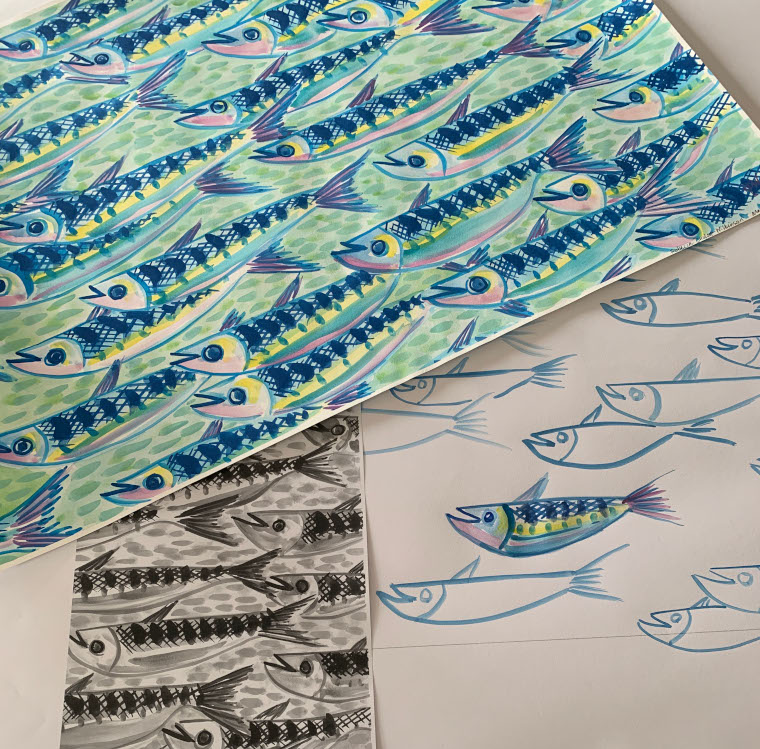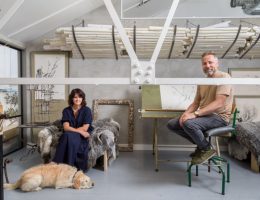During lockdown, artist Rebecca Duckett-Wilkinson set herself the target of painting one pattern a day for 100 days. A selection of her life-affirming prints are now available from Christain Fischbacher
Tell me about your lockdown project. Why did you set yourself the challenge and what did it entail? Within the first two weeks of the Covid 19 lockdown in Italy in March 2020, I decided to start painting one pattern a day. I was planning to participate in a licensing fair for Surface Designers in New York in 2021 so thought the time was right to start working on a portfolio. I set myself the task of finishing a pattern a day. It really gave me a sense of purpose during that quite difficult time and quite confusing time in Italy. After a while, the ‘mission’ to complete the paintings within the day became quite addictive & slightly obsessive.
My whole routine during these days of lockdown revolved around the paintings and days passed very quickly.
I went for walks with my brother, nephew and two friends exploring the surrounding woods, finding new paths. As the lockdown progressed and became more severe, I was restricted to only be able to venture 250 meters from the house.
It was here I found myself drawn to the abundance or weeds and wildflowers which I began looking at in a whole new way. It was also the wonder of the ‘change’ each day. This period in Italy was the first time I had lived uninterrupted, through the seasons. It was wonderful.
Each day as soon as I woke up, I began painting spontaneously and worked in layers. I listened to audiobooks. Sometimes I’d finish late afternoon, other times I worked to beat the clock at midnight. I always stopped to make my three meals and take a walk. This routine helped me focus, to pass the time but also to take my mind off the lockdown. I didn’t know how long it would take so I just kept painting. I started with small pieces and moved on to larger pieces. Before I knew it 100 days had passed, and I had 100 patterns. It was a good number to end on and to then start something new.
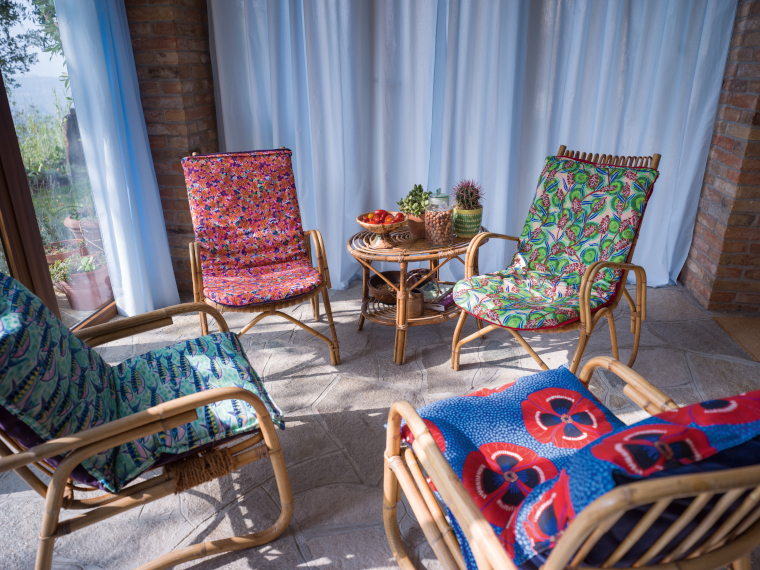
Where were you when you worked on these designs? We have a converted barn in Piemonte Italy. I had come to stay for a couple of months. The Covid-19 pandemic restrictions in Italy were put in place overnight on March 8th. I couldn’t get back home to Malaysia where my husband was and my children were spread around the world. It was a worrying time, but we were all in touch with each other every day and that allowed some stability in terms of reducing worry about family.
I realised very quickly that I was going to be stuck on my own for quite a time. That trip ended up being two years in duration. I do feel very lucky to have been stuck in such beautiful countryside, with a few key family and friends. The local community was also brilliant and I will always be thankful for this.
How hard was it to start a new design every day? I didn’t find it hard as such. The action of just starting and putting spontaneous marks on paper was crucial to the day! I didn’t think about the marks and just let my hands do the work. It was a very meditative process and helped me through a time of being on my own in the house. The sense of satisfaction at the end of day and being happy with what I had made was definitely great for my general wellbeing.
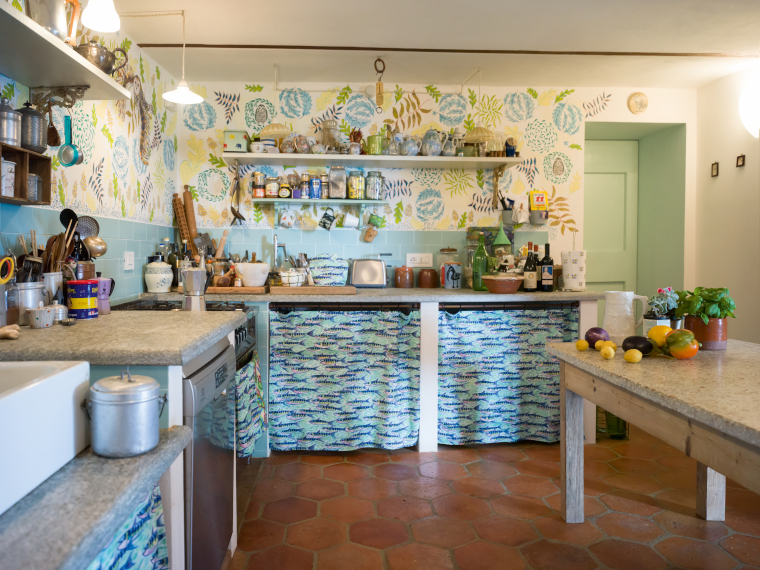
What did you take away from this experience? The whole experience for me was definitely positive in so many ways. The practice of setting up a routine of daily art practice was wonderful for me as an artist. I managed to push myself each day and had to let my head and hand just work spontaneously around any difficulties. It pushed me out of my own comfort zone. As with any practice, I saw an improvement in my own art skills.
I didn’t think about how much art I was making, I just did it each day and it wasn’t until the two years was over, that I really looked at what I had done. There was a lot of work!
My current artwork now has definitely been impacted by all those hours I put into my own practice, in insolation. My thought process, the purpose of my work is also much clearer to me. This has also made me more confident in my own skin as an artist.
The routine I set up (which encompassed making art, making meals, planting vegetables, walking, a few dear friends, the importance of family) has stayed with me and has helped me realise my dream of making art a core part of my general lifestyle.
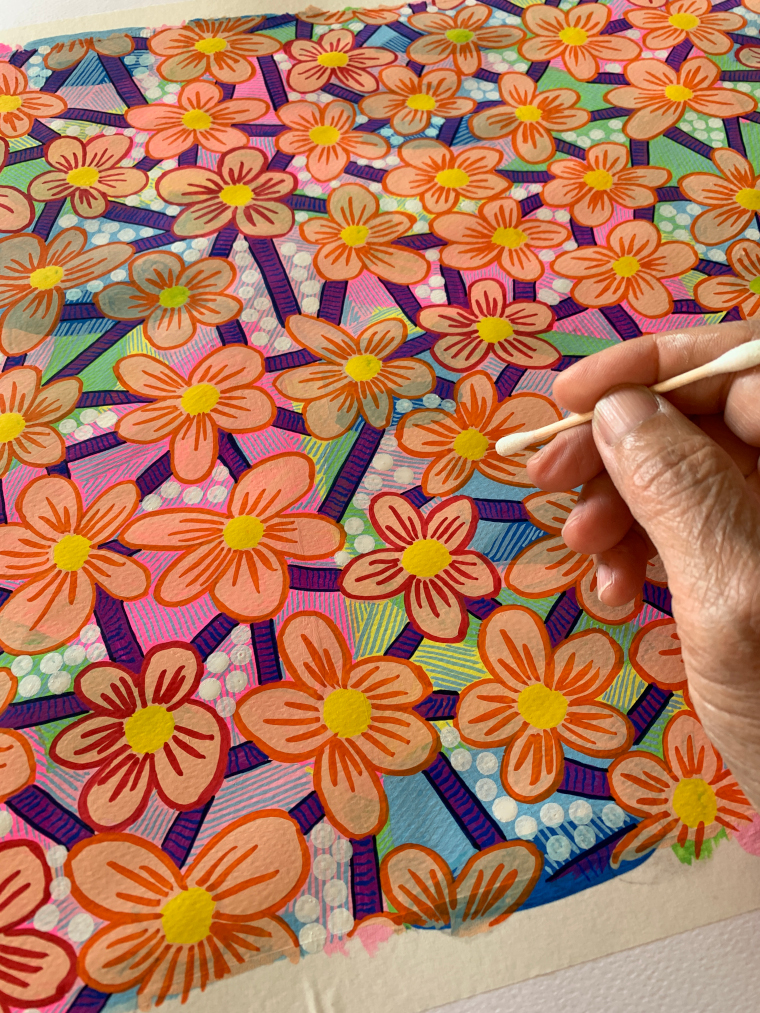
To follow up my interview with Rebecca, I was intrigued to find out about the connection with Fischbacher so I asked Camilla Fischbacher –
What led you to taking Rebecca’s designs and translating them into fabric? Rebecca and I have been friends for almost 30 years. As the restrictions in Italy began to slowly lift, Rebecca exhibited her paintings at a local bar in a nearby town. On the way to Genova, we decided to take a detour and visit Rebecca and see her paintings. I’ve of course been a fan of Rebecca’s work for as long as I have known her, but immediately upon seeing this quite remarkable body of work that she has created, I knew they would make fantastic fabrics.
How many designs did you take and how do you see them being used? We couldn’t make all 100 paintings into fabric, so we selected our favourites, four of which are printed on cotton and one is an embroidery. The prints are direct interpretations and as authentic and honest as we could make them. The embroidery is a collaborative mix of Rebecca’s style and Fischbacher. You can see our aesthetic in the background of the textile whilst Rebecca’s handwriting is still overarching.
The collection is suitable for drapery and light upholstery, and we have also produced some ready-made cushions so that the collection can easily be introduced into an interior with just a splash of colour and pattern.
